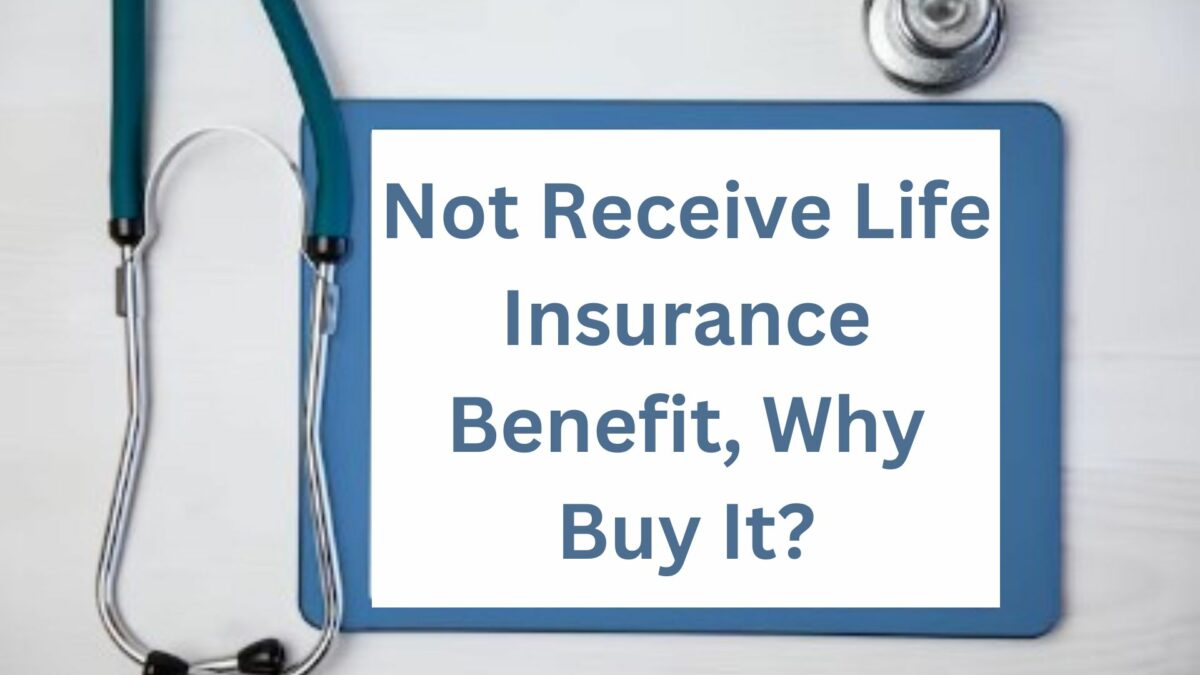“Insurance is the only product that both the seller and buyer hope is never actually used.”
– Unknown
Chances are pretty good that as long as you’re buying life insurance for insurance’s sake – meaning income replacement – and not as an investment or for some other reason, you’re not going to receive the benefit.
- Well, you wouldn’t receive the benefit in any case. Someone else will. You’d be dead.
As we saw in “Do I Really Need Life Insurance?”, according to the Social Security Administration, people between 25-45 are pretty unlikely to pass away in the following 21 years.
Yet, financial planners advise people who do not yet have sufficient wealth to survive the death of a family member to get insurance.
Pay for life insurance when you’re probably not going to die?
What gives?
In order to understand that line of reasoning, let’s look into the realm of investing. With a quick little lesson there, we can draw a parallel and help you to understand why you want to have appropriate insurance coverage.
How Investing Relates to Life Insurance

In order to explain why you would consider purchasing life insurance given that there’s little expectation that your family or beneficiaries would actually receive a payout, we need to dive into the world of investing.
If you really felt super strongly about the future performance of one particular stock, then you could go all in and invest everything in it.
Let’s take a hypothetical stock and pick some random performance. Over 10 years, this stock has an average return of 13%.
However, the performance during those 10 years has been a wilder ride.
Depending on your situation, this type of roller coaster ride may or may not be acceptable. Let’s say that you’re retiring, and you hop on the ride at year 4. You experience a 20% drop AND you’re selling more stock to pay for your living expenses. Hope you budgeted some Tums.
The average return is 13%, but the fluctuation of returns is high. This fluctuation is called the standard deviation, and in investing layman’s terms, it’s how wild the ride gets. In an ideal world, you’d have an average return with no standard deviation, because you’d get the same return every year. If you buy a 10 year CD at 3%, then you get 3% each year. There’s 0 standard deviation on your interest payments. In the example of Stock 1, the standard deviation of the 10 year return is 21.9%, meaning that approximately 2/3 of the time, assuming that future returns look like the past (a not ironclad assumption), returns will be between -8.9% and +34.9%.
So, let’s say that you want to make that ride not so wild. What do you do?
You could buy another stock.
Let’s add Stock 2 to the portfolio. Here’s its hypothetical returns.
Its average return is 19.7%, and the standard deviation is 60.5%. It’s an even hairier ride.
You get a return of 16.4% and a standard deviation of 33.6%. Depending on your frame of reference, you’ve increased returns for a little more volatility or you’ve decreased returns for a little smoother ride.
Eventually, though, you can smooth out performance while maintaining similar returns. Most scholars think that 20 stocks is sufficient to get all of the benefits of reducing variance while maintaining returns.
Let’s expand our hypothetical portfolio out to 20 stocks and see what happens.
| 10 year return | Standard deviation | |
| Stock 1 | 13.0% | 21.9% |
| Stock 2 | 19.7% | 60.5% |
| Stock 3 | 6.2% | 46.3% |
| Stock 4 | 11.1% | 52.4% |
| Stock 5 | 30.7% | 55.5% |
| Stock 6 | 1.8% | 58.9% |
| Stock 7 | 29.9% | 31.2% |
| Stock 8 | 6.9% | 34.4% |
| Stock 9 | 26.8% | 59.2% |
| Stock 10 | -4.8% | 51.0% |
| Stock 11 | 12.0% | 103.3% |
| Stock 12 | 10.3% | 51.8% |
| Stock 13 | 39.5% | 46.4% |
| Stock 14 | 12.6% | 30.9% |
| Stock 15 | 19.3% | 85.3% |
| Stock 16 | -2.3% | 49.6% |
| Stock 17 | 6.6% | 56.0% |
| Stock 18 | 17.1% | 81.2% |
| Stock 19 | 15.4% | 23.7% |
| Stock 20 | -4.6% | 32.9% |
The average standard deviation of these stocks alone is 51.6%. The average return is 13.4%.
However, when you combine the stocks together in a portfolio (see this article by Wayne Thorp, CFA, for how to do it in Excel), the standard deviation of the portfolio is 13%.
The portfolio has a low return of a loss of 10.96%. However, in the simulated returns of the 20 hypothetical stocks, there are 55 instances out of 200 where an individual stock’s annual return is less than that amount. So, with the hypothetical portfolio, we have losses 20% of the time. If we were to randomly pick stocks, we’d have losses 74 out of 200 times, or 37% of the time.
By diversifying, we’ve reduced the instances of heartburn while maintaining good returns.
What does this have to do with buying life insurance, though?
Remember when we discussed stock 1 and the couple of bad returns it had?
If you bought in year #3 when you’d just retired, you probably wouldn’t want to take a 20% loss, and you might not even be able to afford to.
The same holds true with life insurance.
You’re buying one stock: your longevity.
You cannot diversify away the risk by buying life insurance on a bunch of other people and hoping they die before you do.
While bad outcomes might not happen often, if you draw the short straw of the Fates, then, unless you’ve already accumulated enough net worth for your family to be able to withstand a member’s passing, you’ll cause a Very Bad Outcome.
Remember that chart from the previous article?
The chances of dying are pretty low.
However, the outcome without insurance is Very Bad.
So, when you cannot diversify your risk away, you can make two choices:
- Accept the risk
- Pass the risk to someone else via insurance
Are you really sure you want your family to have to deal with the outcome if you take your chances and a worst case scenario happens?
Author Profile
- John Davis is a nationally recognized expert on credit reporting, credit scoring, and identity theft. He has written four books about his expertise in the field and has been featured extensively in numerous media outlets such as The Wall Street Journal, The Washington Post, CNN, CBS News, CNBC, Fox Business, and many more. With over 20 years of experience helping consumers understand their credit and identity protection rights, John is passionate about empowering people to take control of their finances. He works with financial institutions to develop consumer-friendly policies that promote financial literacy and responsible borrowing habits.
Latest entries
 Low Income GrantsSeptember 25, 2023How to Get a Free Government Phone: A Step-by-Step Guide
Low Income GrantsSeptember 25, 2023How to Get a Free Government Phone: A Step-by-Step Guide Low Income GrantsSeptember 25, 2023Dental Charities That Help With Dental Costs
Low Income GrantsSeptember 25, 2023Dental Charities That Help With Dental Costs Low Income GrantsSeptember 25, 2023Low-Cost Hearing Aids for Seniors: A Comprehensive Guide
Low Income GrantsSeptember 25, 2023Low-Cost Hearing Aids for Seniors: A Comprehensive Guide Low Income GrantsSeptember 25, 2023Second Chance Apartments that Accept Evictions: A Comprehensive Guide
Low Income GrantsSeptember 25, 2023Second Chance Apartments that Accept Evictions: A Comprehensive Guide

